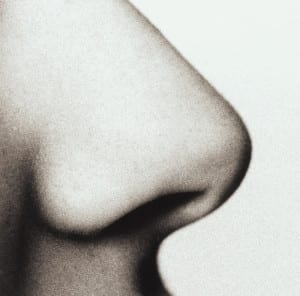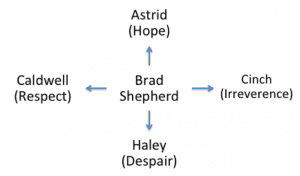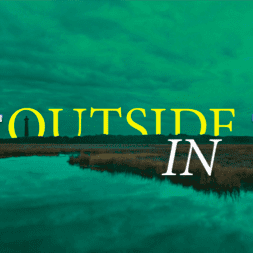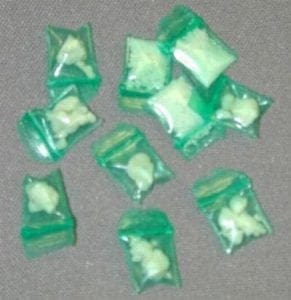
The recording of the audio book version of Outside In has just been completed at Waveburner Recording. Narrated by Cooper, the audio version will offer listeners the added bonus of hearing the author’s words in his own reading and presentation style. The book will be available on Amazon, Audible, and all places audio books are sold. Stay tuned to ByCooper.com for the release date in the coming weeks.

This is another installment in my “A Deeper Look” series peeling back the layers of Outside In to better understand the meaning of the setting, themes, characters, plot, and style.Outside In is literary fiction in the emerging category of new adult focusing on characters in their twenties to thirties confronting issues with identity, career and relationships. It is a bildungsroman (novel of becoming), also know as coming of age story, but focuses on the moral and psychological growth of the protagonist ten years later in life than the traditional works in the bildungsroman genre.
Delaying the coming of age suggests becoming is not restricted to a specific time period and also to thrust more complex issues upon the main character than would be possible at an earlier period in life. Individuals mature at different rates and continue to become throughout their lives based on a multitude of factors, such as family background, emotional and mental capabilities, situations experienced, and cultural surroundings.
As was mentioned in the deeper look at themes, twenty-somethings are spending extended periods in higher education and living at home with parents for longer periods of time than previous generations due to the abundance of choices and the lack of maturity to make the increasingly complex choices required to transition from adolescence to adulthood.
Outside In is told in first person present tense similar to the popular Hunger Games and 50 Shades trilogies. This allows readers to embark on the protagonist’s journey through his or her thoughts, perceptions, and encounters as they happen. Although the first person limits the perspective to only one character’s view, it creates a much more visceral experience and allows readers to live vicariously through the protagonist feeling the experiences at a much deeper level.
Often on-the-nose, the dialogue is another distinctive style characteristic, meant to represent another shield the characters use to protect themselves. They talk about passion and living life to the fullest rather than doing anything except escaping to whatever vice is available. This also connects with the main theme of the story about how people live from the outside-in, wearing masks and veils and putting themselves in an environment to create the image of who they think they should be instead of trusting who they are and allowing their true selves to emerge.
Although there are serious messages and topics like addiction and self-medication in Outside In, it is intended also to be humorous and satirical, leaving the reader to discern the meaning. One person’s hackneyed phrase is another’s kernel of wisdom. Nothing should be taken at face value. The descriptions, characters, actions, and dialogue are meant to function as a mirror of modern culture and emphasize knowing what to do often results from learning what not to do.
This is another installment in my “A Deeper Look” series peeling back the layers of Outside In to better understand the meaning of the setting, themes, characters, plot, and style.
Since Outside In is classified as literary/new adult fiction, the characters more than the action are the focus of the novel. In developing the five main characters — Brad, Astrid, Cinch, Haley, and Caldwell — I intended to create the structure of a compass with the protagonist Brad at the center being pulled in different directions by the supporting characters who represent opposing emotions.

Astrid is the strongest and most positive symbolizing hope; Cinch is the affable party boy with a “Who cares?” and irreverant attitude; Haley with her bitter and insecure disposition embodies despair, standing opposite Astrid; and on on the other side of Cinch is Caldwell, a wise sage, beaten and battered by his life experiences, representing respect.
As was mentioned in the deeper look at the themes of Outside In, the characters all to some degree live their lives from the outside-in. They hide behind masks and veils to protect themselves, talking about passion and living life to the fullest rather doing anything except escaping to whatever vice is available. Even Caldwell, depending on whether the reader interprets his advice as truths or platitudes, could be viewed as a coward hiding from the world in the mysterious, although cliched, island drifter persona he has created. Astrid is the only one who, watching Brad make the same mistakes overhand over due to his fear of actually asserting himself, realizes her attraction to the island is the haven from real life that it provides.
The characters, and this is one of the most misunderstood points of Outside In, are intentionally frustrating and meant to make the reader uncomfortable. Their immature and irresponsible reactions and impulse for excess and instant gratification are intended to reflect the proliferation of that behavior in modern culture. They function as a mirror to show the less desirable traits we all possess and are all in one way or another lost. To find their way, they put themselves in environments to create the image of who they think they should be instead of allowing their trues selves to emerge.
Even the character names, from the main characters to the ones with supporting roles, have been chosen to say something about that person and also have a common theme connecting them all. But I won’t reveal all the secrets here. Just as one has to unwrap a present to appreciate the contents, peel back the layers and see beyond the party in Outside In.

If you’re in the Cleveland/Akron area, come out to the Books A Million (BAM) store on Howe Avenue in Cuyahoga Falls on March 12, 2014 from 6:30-8:30.
View Larger Map
I’ll be sharing insight and background on Outside In and signing books. More Ohio locations and dates have been announced so check the Buzz page for a store near you. Hope to see you!

If you’re in the Toledo area, come out to the Books-A-Million store (BAM) at the Town Center at Levis Commons on March 14, 2014 from 6:30-8:30.
View Larger Map
I’ll be sharing insight and background on Outside In and signing books. More Ohio locations and dates to be announced so stay tuned for a store near you. Hope to see you!

This is another installment in my “A Deeper Look” series peeling back the layers of Outside In to better understand the meaning of the setting, themes, characters, plot, and style.
In creating Outside In I envisioned a cross between The Catcher in the Rye and Fear and Loathing in Las Vegas. Whereas Catcher is about how to enter adulthood without losing oneself and Fear and Loathing deals with finding the American Dream by destroying and abusing the symbols of American consumerism, Outside In proposes identity can’t be found or fabricated but emerges from within when one has the courage to let go.
This letting go for many of the characters in Outside In translates to a hedonistic pursuit involving alcohol, sex, and drugs, the vices so readily available to a person who wants to forget. These vices symbolize the modern trials people face in their journeys of becoming. What starts as recreational experimentation and the exploration of new experiences transform to obsession and complete loss of self. This descent into excess and instant gratification is meant to raise awareness of current societal issues with addiction and self-medication and pose the question, At what point do the tools we use in our journey become the focus of our search?
Watching the characters react with immaturity and irresponsibility to deal with their lives is often frustrating and uncomfortable in the story. This is intentional and meant to represent what psychologist Erik Erikson referred to as a “Quarter Life Crisis”. Erikson theorized when events transpire to thwart the development of intense, intimate relationships for those in their twenties and early thirties, an identity crisis ensues triggering doubt of the life decisions made and the steps to take going forward, inducing feelings of betrayal, isolation, and loneliness. Related to the Quarter-Life Crisis, the characters’ actions are also meant to draw attention to the delayed rites of passage so prevalent in modern culture. With the abundance of choices, twenty-somethings are spending extended periods in higher education and living at home with parents for longer periods of time than previous generations. This uncertainty and fear to move forward into adulthood can create a paralysis in which a person is more likely to go backward than forward.
The connection to the title in Outside In is how the characters hide behind masks and veils and put themselves in environments to create the image of who they think they should be. They believe to become, they must change their outside worlds to allow their true selves to come out instead of strengthening their inner selves so that they emerge confidently and are no longer guarded and hidden. Evidenced in not only action but also in speech, the dialogue is often intentionally on-the-nose and represents another shield the characters use to protect themselves. They talk about passion and living life to the fullest but rarely do anything except escape to whatever vice is available. Outside In is rich in symbolism and meaning. Even the character names, from the main characters to the ones with supporting roles, have been chosen to say something about that person and also have a common theme connecting them all. But I won’t reveal all the secrets here. Just as one has to unwrap a present to appreciate the contents, peel back the layers and see beyond the party in Outside In.

If you’re in the Cleveland area, come out to the Books-A-Million store (BAM) at Westgate Shopping Center on March 13, 2014 from 6:30-8:30.
View Larger Map
I’ll be sharing insight and background on Outside In and signing books. More Ohio locations and dates to be announced so stay tuned for a store near you. Hope to see you!

Cooper will be a guest on Talk at Ten on WCPR radio on March 13 at 10 am to talk about Outside In and why he chose to set the story at Put-in-Bay. If you are unable to tune in to the broadcast, you can download the radio show to your mobile device or listen on the WCPR website.

If you’re in the Sandusky area, come out to the Books-A-Million store (BAM) at Sandusky Mall on March 15, 2014 from 7-9. I’ll be sharing insight and background on Outside In and signing books. More Ohio locations and dates to be announced so stay tuned for a store near you. Hope to see you!







